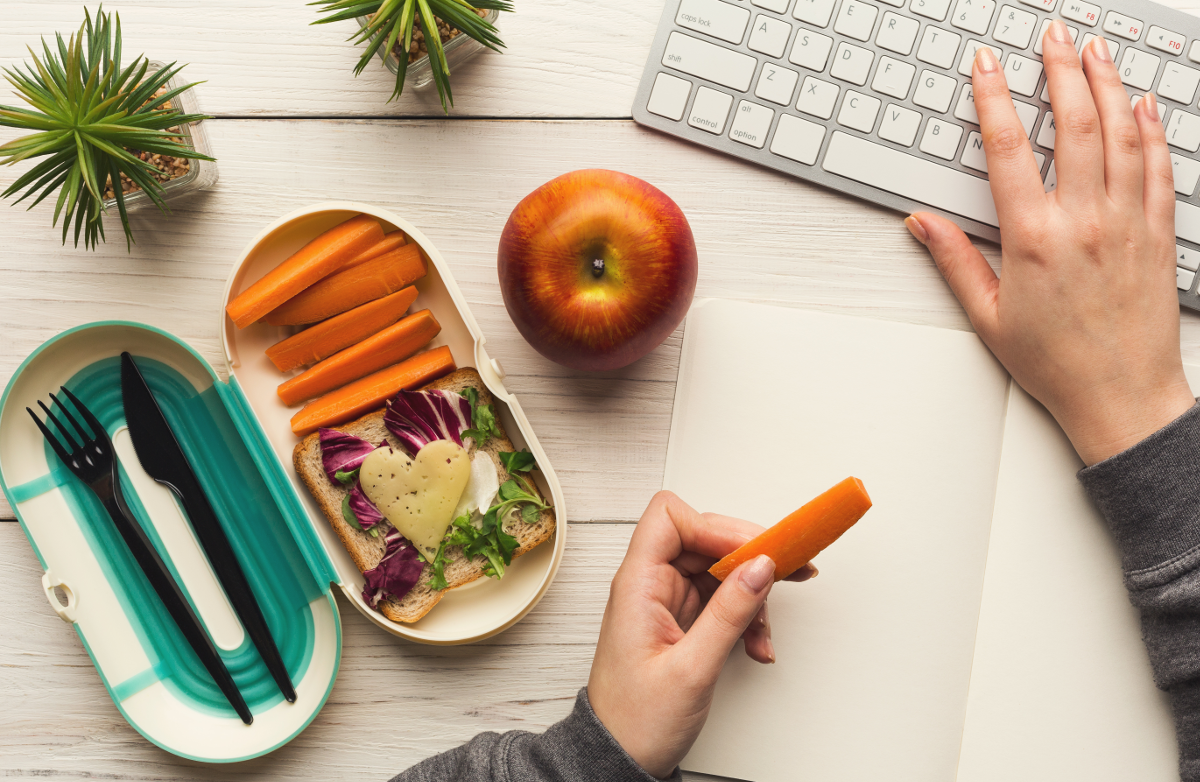
There are simple ways to save time and reduce the hassle of meal planning so that it can easily become a regular part of your weekly routine without any of the frustration.
Your fit friend raves about it, so you're already familiar with the benefits of meal planning and how it can lead to healthier, less stressful meals for you and your family. Yet, somehow, week after week, you're stuck in the rut of scrambling to throw together a simple meal on busy nights or relying on the fast food drive-thru a little too often. If spending hours brainstorming meals, shopping and prepping ingredients ahead of time isn't something you've had the time or desire to do, though, we have good news: There's an easier way. There are simple ways to save time and reduce the hassle of meal planning so that it can easily becomes a regular part of your weekly routine without any of the frustration.
1. Think In a Set of Three
Registered dietitian Jenna Guadagna advises her clients to think about meal planning as a set of three questions to ask yourself.
- What do I enjoy? "We are more likely to include the foods we enjoy," she points out. "To include variety, make them different ways with different ingredients. For example, if you like red peppers, you can plan to make stuffed peppers, fajitas, omelets or wraps."
- How much time do I have? "Are you planning a CrockPot meal, Instant Pot meal, something that bakes or something that boils," she asks. "Knowing the medium [you want to use] and how much time you have helps planning."
- Should I use leftovers now or later? Freeze your leftovers or use them in the next couple of days," she suggests. "If a day passes, and you did not eat your dinner leftovers for lunch, freeze them. There will be a day in the near future when you come home from work without the energy to cook, [and] having that pre-made meal in the freezer will feel like a big win."
2. Make It a Family Affair
The time-consuming aspect of meal planning is often coming up with ideas, and if you're cooking for multiple people, accommodating everyone's taste preferences can seem almost impossible. Professional organizer Stacey Agin Murray suggests interviewing members of your family and writing down their favorite breakfast, lunch and dinner ideas. "Create a master list of these meals on paper or on a digital device to reference before creating your supermarket shopping list," she explains. "This gives your meal planning ideas a place to 'live' that is outside of your brain!"
3. Set Themes
Weight-loss coach Jenn Espinosa-Goswami believes one of the best meal planning strategies—especially when you have a family with varied food tastes—is to set themes. "This leaves some flexibility in terms of what recipes to rotate and which ingredients to use," she explains. "If I am feeling uninspired and the kids know what our theme is, they can help me with deciding and even grocery shopping." Espinosa-Goswami says this strategy also allows her to repurpose leftovers that were prepared for buffet-style eating earlier in the week. "Grilled food on Saturday could become a sandwich for Wrap Wednesday. Travel Thursday leftovers could become part of a smorgasbord of snacks for Sunday with a few homemade sauces or dips."
Here is what her family themes look like:
- Meatless Monday
- Taco Tuesday
- Wrap Wednesday
- Travel Thursday (international, varies by week)
- Fridge Friday (leftovers)
- Super Saturday (kid's choice)
- Snack Sunday
Espinosa-Goswami also recommends not cooking every meal for the week when you are new to meal planning. "That is like going from a one-mile run to a marathon," she cautions. "Instead, choose just one meal."
4. Go With the Flow
The most time-consuming part of meal planning is often the trip to the grocery store. Do you spend time wandering from one side of the store to the other and back again? It's frustrating when you are in aisle 25, ready to head to the checkout, then suddenly remember you forgot to grab a box of pasta from aisle one. To streamline this process, prepare a list—but not just a random list will do. "I create my shopping list according to the flow of the supermarket, [which] helps save time and also [keeps me from] forgetting something and running between aisles," says registered dietitian Toby Amidor. Some grocery store chains even offer apps that help you create a list and organize it by aisle for you.
5. Plan Quality Over Quantity
Health coach Niki Campbell suggests that you don't need to plan every meal, every week. "Plan three to four dinners at the most," she advises. "Make enough to have leftovers for lunch on two or three days."
On other days, she suggests making salad kits ahead of time. This consists of lettuce and veggies in one container, protein in another and any toppings like sunflower seeds, croutons or nuts in a small baggie. Then you can toss these in a lunch bag or use them for dinner when you're short on time. "Breakfast and snacks should be grab-and-go items, such as premade egg cups and granola bars," Campbell explains. "Keep it simple."
She offers a recent week of meals at her house as an example of dishes that can all be prepped in less than two hours:
- Shred chicken thighs cooked in the Instant Pot to use in any meal, casserole, et cetera.
- Brown ground turkey and beef for tacos and chili or to put in spaghetti sauce.
- Chop all veggies to use in salads or to cook and prep lettuce for salads.
- Bake a pound of bacon for fast morning breakfast sandwiches.
- Make one type of protein salad: tuna, chicken or egg.
- Make brown rice or quinoa for use in salads, side dishes, et cetera.
- Plan for one night of takeout.
Meal planning doesn't have to be complicated or stressful and it shouldn't make you want to rip your hair out. Keep in mind that making a simple meal at home is almost always better than what you'd pick up at a fast food restaurant. Start with just planning and prepping a few meals each week, then slowly add more until you become a meal-planning pro!













